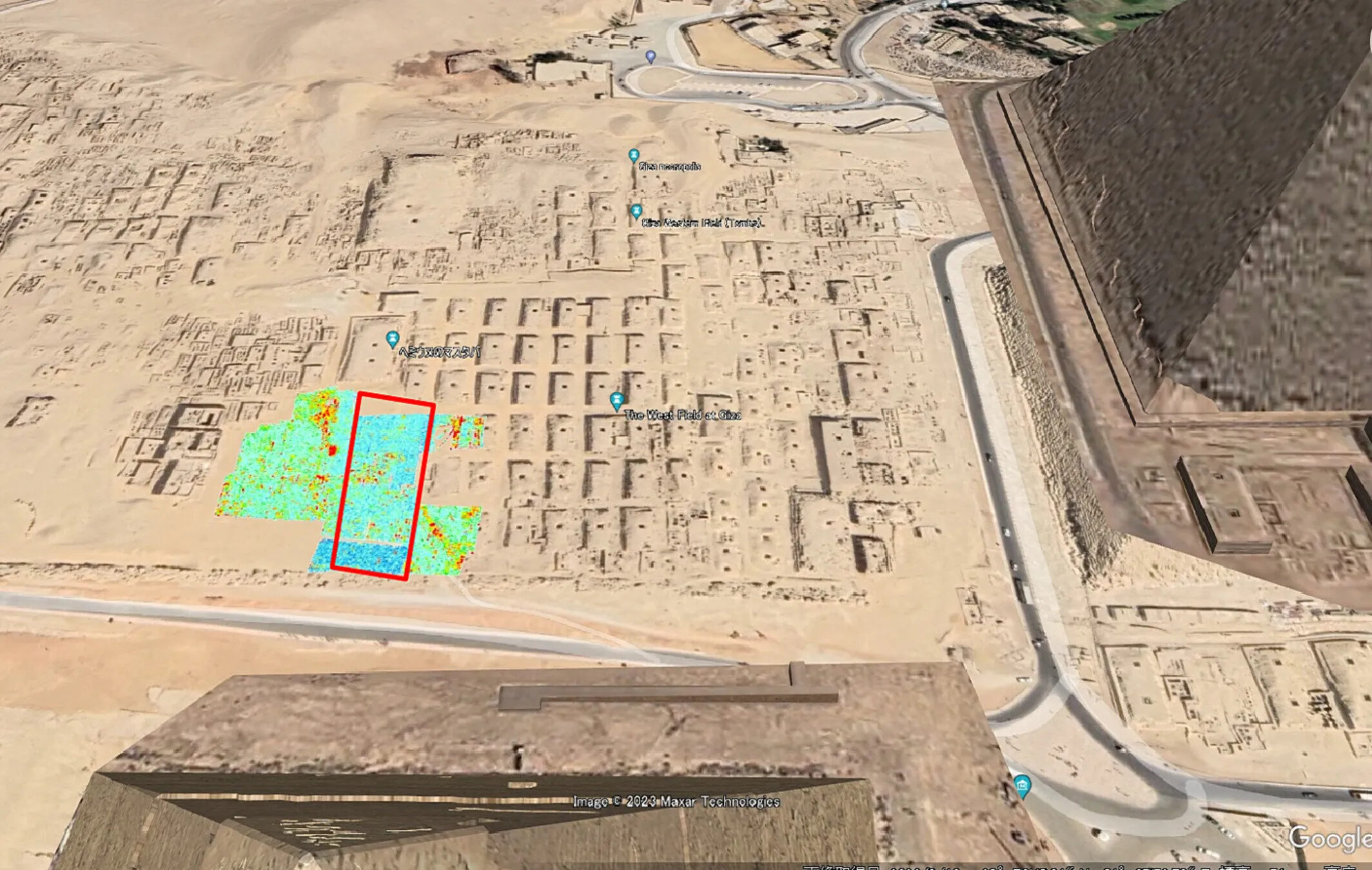What is this anomaly discovered near the Great Pyramid of Giza?
Follow us on Google News (click on ☆)

Location of the studied area on Google Maps. The red rectangle indicates the initial survey area. The GPR horizontal profile is in color. North view.
Credit: Archaeological Prospection (2024). DOI: 10.1002/arp.1940
Among the notable archaeological discoveries at Giza is the Western Cemetery, located near the Great Pyramid. This cemetery mainly consists of mastabas, which are rectangular tombs made of limestone or clay with flat roofs. However, a vast, flat, and vacant area in the Western Cemetery had remained unexplored until now.
Researchers used GPR and ERT to survey this unexplored area. The data obtained revealed the presence of underground structures, labeled as anomalies due to their differing density from the surrounding soil. The shapes of these structures indicate they are likely of human origin.
Two distinct structures were identified beneath the surface: one shallow and the other deeper. The shallow, L-shaped structure is less than 7 feet (2 meters) deep and measures approximately 33 feet (10 meters) wide by 49 feet (15 meters) long. Researchers believe it might have served in the construction of the deeper structure, as it appears to have been backfilled with sand.
The deeper structure is located between 16 and 33 feet (5 and 10 meters) underground and measures approximately 108 square feet (10 square meters). Researchers suggest a careful excavation of the site to determine the exact nature of these structures.